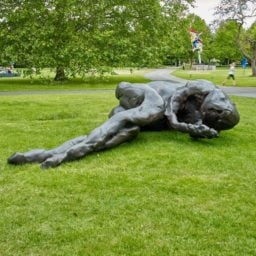Barbara Hepworth hated being called a “sculptress,” but she was all for young women becoming sculptors. Thanks to talent, ambition—and true Yorkshire grit—she achieved international success against the odds, and always held her own against the fame of Henry Moore, her Yorkshire-born contemporary.
The inaugural Yorkshire Sculpture International, which opened last weekend in Hepworth-Moore country in the North of England, builds on their remarkable legacies. And it takes its inspiration from another sculptor, Phyllida Barlow, who provided the curators a starting point with the observation: “Sculpture is the most anthropological of art forms.”
Being a female sculptor like Barlow or Hepworth has never been easy. “I wouldn’t say there is equality, but it is certainly changing for the better,” says veteran US-born, London-based artist Liliane Lijn, who has been creating kinetic text and light sculptures since the 1960s. Recalling the chauvanism she and her contemporaries had to battle, she says: “Sculpture was considered a male area.”
Not any more. Clare Lilley, the director of program at the Yorkshire Sculpture Park who has co-curated the exhibition, says it is balanced in terms of “gender, age, and ethnicity.” Ten of the 19 artists are female, and there are even more if you include the five, young, female “associate artists” whose work is on show in the “Associated Matter” exhibition at the sculpture park.
“We are on a coalfield here, we are the center of steel production,” Lilley tells artnet News. “It was appropriate that for the first festival [we] worked with artists who have a particular connection to the manipulation of materials.” Among those artists is the young Yorkshire-based sculptor Rosanne Robertson (born 1984), whose work, stone (butch) (2019), and video stonewaterbody (2019) follows in the footsteps of Hepworth and Moore, but with an LGBTQ attitude.

Rosanne Robertson, still stonewaterbody (2019). Copyright the artist. Yorkshire Sculpture International.
And there is still more to come. On July 3, Lijn will unveil a major new commission called Converse Column on the campus of Leeds University, one of several events associated with the exhibition, which also includes presentations at the Hepworth Wakefield, Leeds Art Gallery, and the Henry Moore Institute in Leeds. Head to Dean Clough Mills in nearby Halifax for Conrad Shawcross’s Cord, a kinetic installation installed in a former Jute Shed. All in all, the organizers can claim with good cause that Yorkshire is now one of the best places to experience sculpture in the UK.
Here are five highlights from the first Yorkshire Sculpture International.
Huma Bhabha
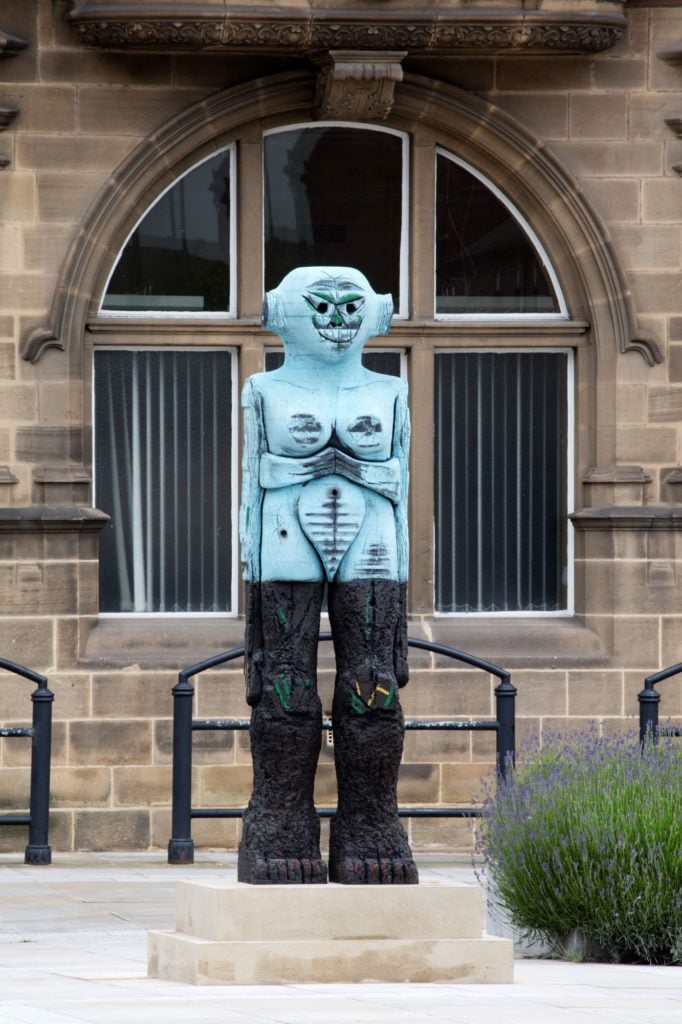
Huma Bhabha, Receiver (2019). Photography Jerry Hardman-Jones. Courtesy of the artist and Salon 94 New York.
Huma Bhabha is almost as big a coup as getting Damien Hirst on board to help launch the new triennial. Her giant standing figure, Receiver, combines street cred with sculptural drama. The Pakistan-born, upstate New York-based artist, whose giants bestrode the roof of the Metropolitan Museum of Art last summer, has chosen a spot in front of Wakefield’s 19th-century County Hall for her contribution to the sprawling exhibition. The strange assemblage carved out of Styrofoam and cork creates a punky contrast to the traditional bronze work, standing opposite, of Queen Victoria aka Empress of India. It’s as if the empire has struck back in a strange and mysterious way…
Nairy Baghramian
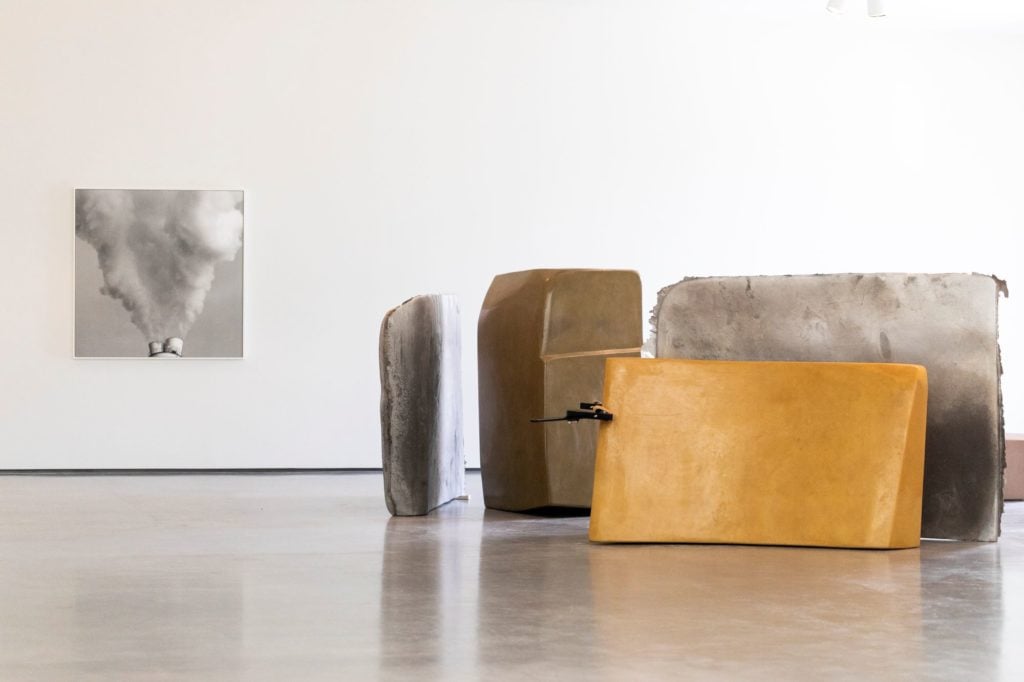
Installation shot of work by Nairy Baghramian as part of Yorkshire Sculpture International at the Hepworth Wakefield. Courtesy the artist and the Hepworth Wakefield. Photo by Nick Singleton.
The Berlin-based, Iran-born artist Nairy Baghramian never disappoints. A gallery of her compelling constructions made of wax and aluminum alongside photographs of plumes of vapor emerging from industrial chimneys is a near perfect fit for the Hepworth Wakefield. Nearby displays show how Barbara Hepworth experimented with industrial materials (particularly expanded metal) and also her sculptor’s eye for photography. It is hard to believe that Baghramian, who was the toast of Münster Skulptur Projeckte in 2017, has not had a major solo museum show in the UK. Kudos to the Yorkshire Sculpture International and Hepworth Wakefield for correcting that oversight.
Ayşe Erkmen
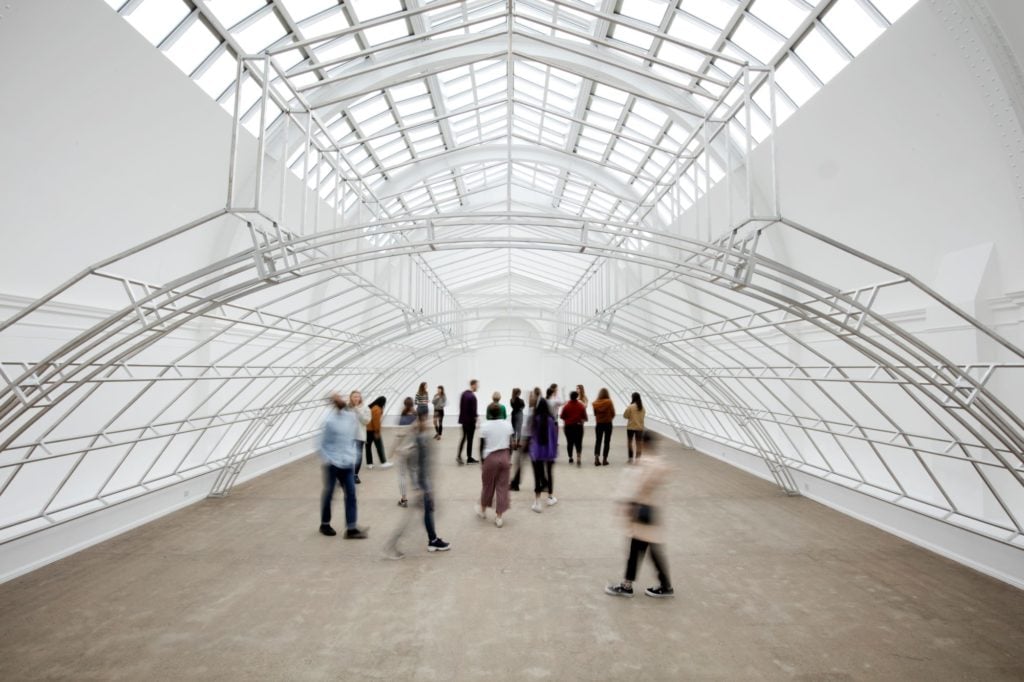
Ayşe Erkmen, three of four (2019). Photo by Jerry Hardman-Jones.
Ayşe Erkmen might not be as well-known as other artists participating in the festival, but no one who has experienced her intervention in Leeds Art Gallery will forget it. The artist, who lives in Istanbul and Berlin, has “lowered” the 19th-century vaulted glass roof of its recently restored Central Court. Like the work of the sculptor Phyllida Barlow, Erkmen’s site-specific installation makes you want to explore the space. The work also plugs directly into the history of the building, and the civic pride it embodies. For decades the Victorian-era roof was hidden by a 1960s version of a white-cube gallery that could have been anywhere.
David Smith
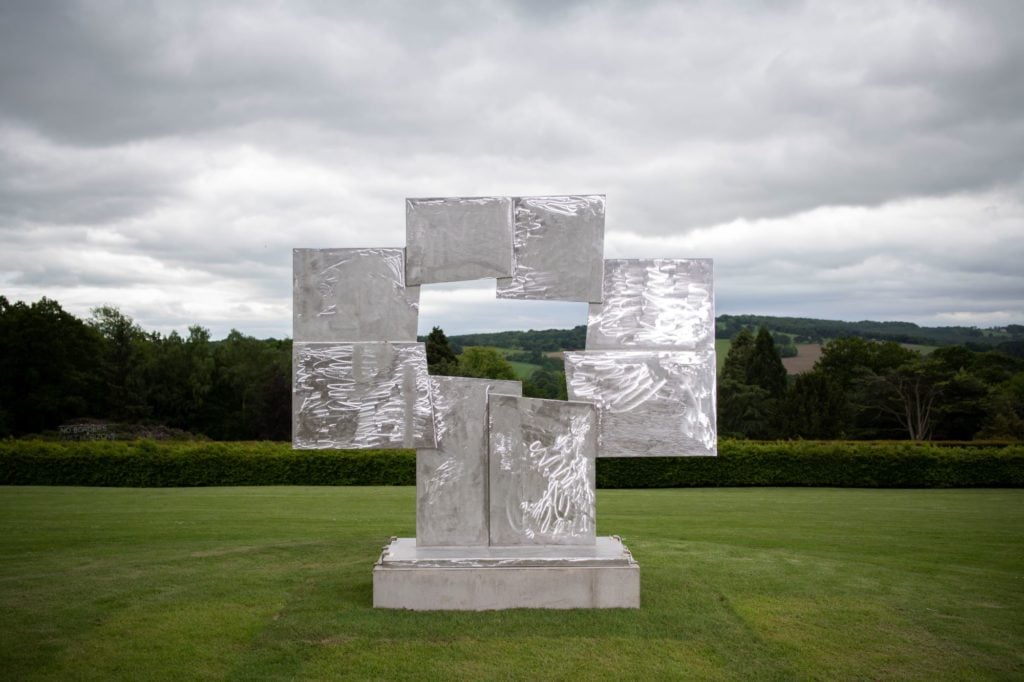
David Smith, Untitled (Candida) (1965) © 2019 The Estate of David Smith, Licensed by VAGA at Artists Rights Society (ARS), NY. Courtesy YSP. Photo © Jonty Wilde.
One of Smith’s last works before his untimely death in a car crash, Untitled (Candida) (1965) overlooks the Yorkshire Sculpture Park, reflecting the grey sky on an overcast day and catching the light at sunrise and sunset, just as the artist intended. Smith’s daughters Candida (after whom the work is named) and Rebecca traveled to Wakefield to help oversee its installation. In a public conversation on the occasion of the exhibition, Lilley revealed that the Tate was initially reluctant for one of its loans to be installed outdoors. Candida insisted, the Tate relented, and Smith’s stainless steel work Cubis XIX (1964) is in the open air, reflecting the changing daylight just as her father intended.
Damien Hirst
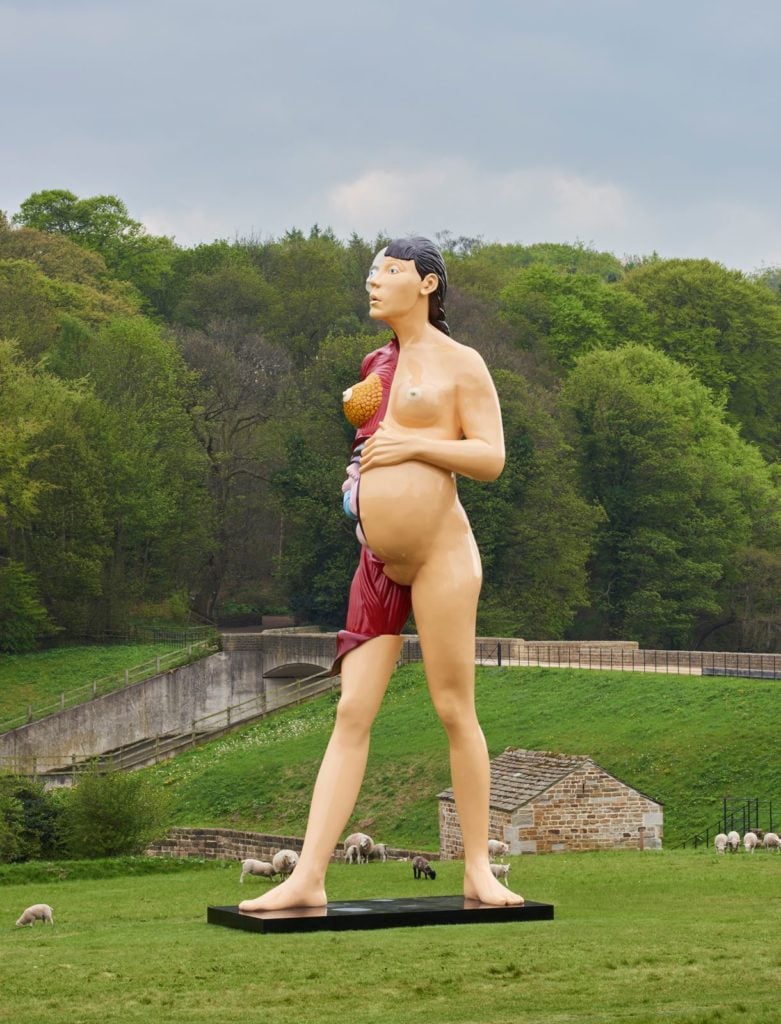
Damien Hirst, The Virgin Mother (2005–06). Photographed by Prudence Cuming Associates. © Damien Hirst and Science Ltd.
Hirst’s supersized and brightly painted bronzes, including his anatomical take on Degas’s Little Dancer, The Virgin Mother (2005–06), are an eye-catching contrast to the Henry Moore bronzes in the rolling fields of the Yorkshire Sculpture Park. But Hirst’s male anatomical model on steroids, Hymn (1999-2005) comes into its own in Leeds city center. The installation of Black Sheep With Golden Horns (2009) in the middle of Leeds Art Gallery also feels like a true homecoming.
The Yorkshire Sculpture International is on through September 29 in Leeds and Wakefield, at various venues.









